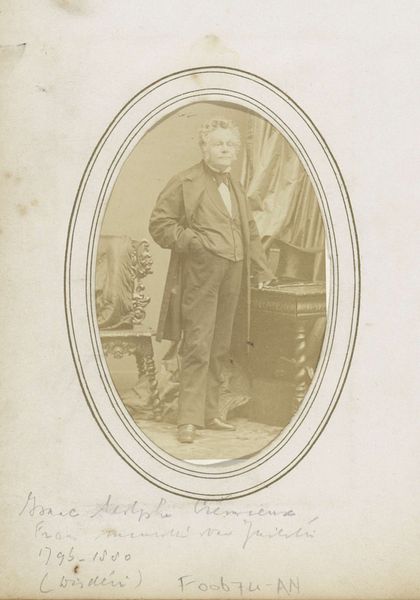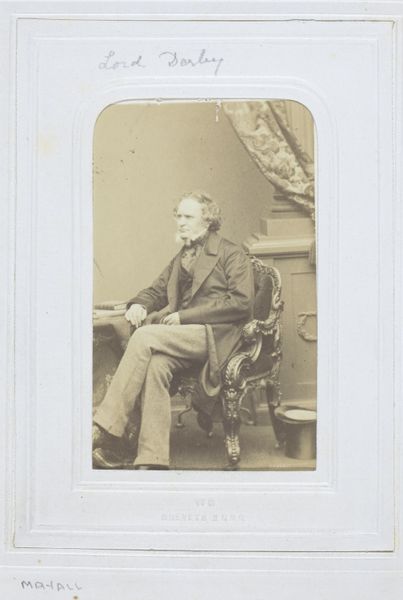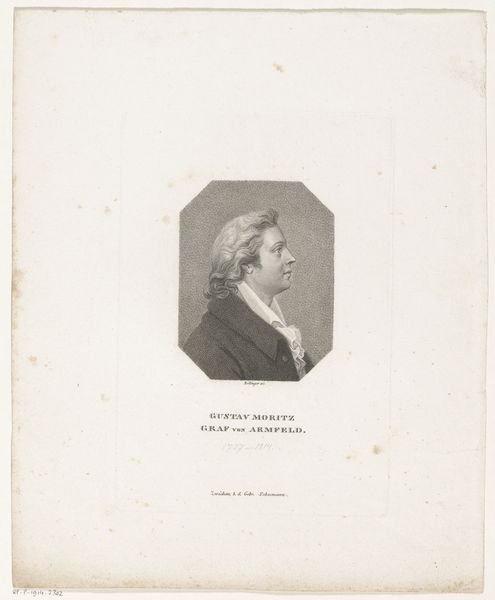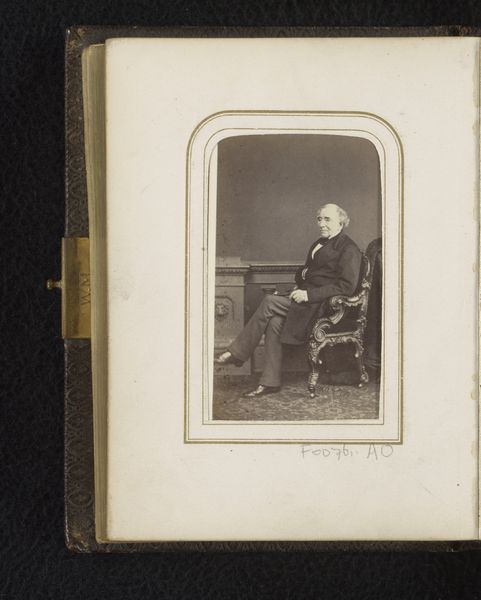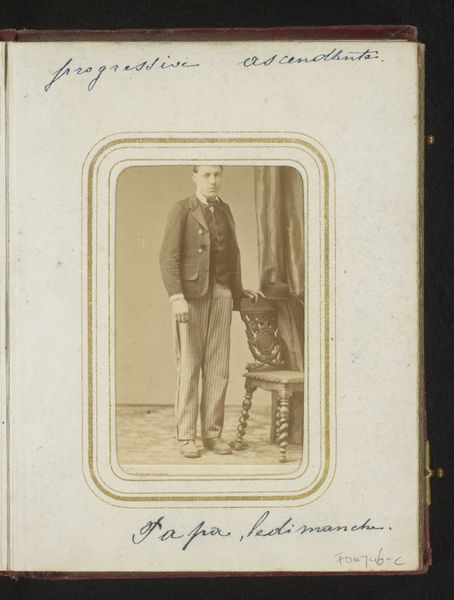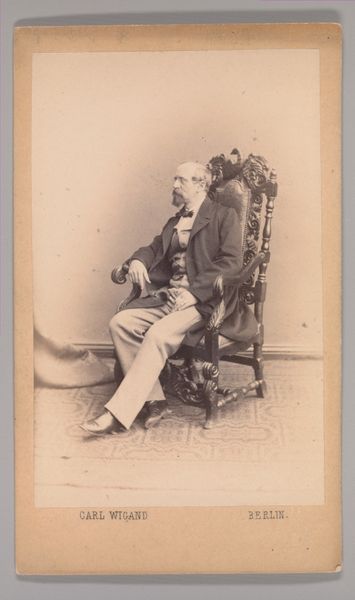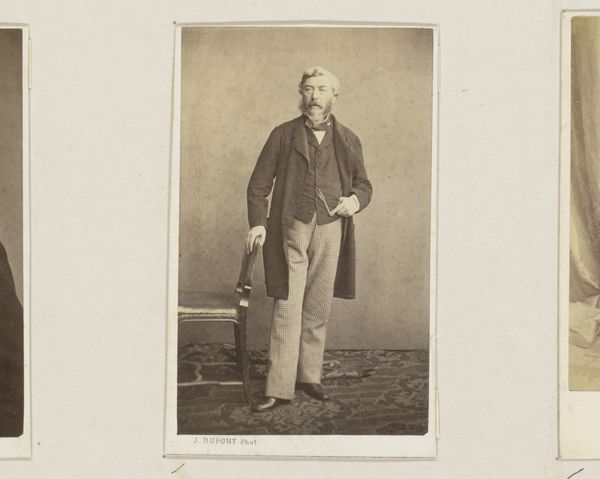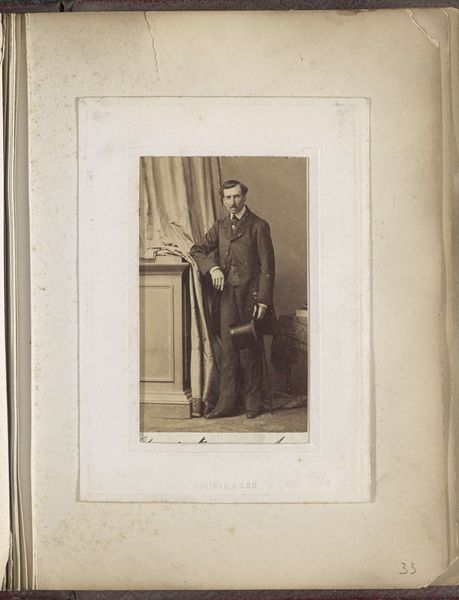
#
aged paper
#
toned paper
#
pencil sketch
#
personal sketchbook
#
coloured pencil
#
watercolour bleed
#
watercolour illustration
#
sketchbook art
#
pencil art
#
watercolor
Dimensions: height 88 mm, width 53 mm, height 98 mm, width 60 mm
Copyright: Rijks Museum: Open Domain
Curator: Looking at this full-standing portrait, "Portret van de Amerikaanse consul Joel W. White", dating between 1860 and 1866, what stands out to you? Editor: Initially, the subdued tones evoke a somber mood. It's predominantly monochromatic. Curator: The work appears to be created using various types of pencil, and perhaps some watercolour. What impact does this material choice have? Editor: I see it primarily through the lens of its historical social context, the manufacturing processes related to photography emerging. This tonal choice represents a specific moment in photographic and portraiture. It raises questions about its reception among different social classes at this historical moment. Curator: And how does White’s pose affect the narrative? The way he leans on what seems like a draped mantle with such a composed, still stance? Editor: The composition creates an image of respectable manhood. It is meant to transmit this image, a signal, reflecting a certain kind of male dominance in its particular political period. Note also the use of what might be photographic props behind White to give him a greater sense of status. The photographic materials work with posing choices here. Curator: Considering the era, this image signifies so much about gender, power, and American identity at a tumultuous point in history. And also its very construction; consider this object as the confluence of American ambition with that of emerging industrial possibilities and image construction. What's your final thought here? Editor: Examining its materiality and the cultural and gender implications certainly deepens our understanding and challenges notions of straightforward portraiture. Curator: Agreed. Bringing together form and socio-historical context illuminates fascinating perspectives and the narrative construction of history.
Comments
No comments
Be the first to comment and join the conversation on the ultimate creative platform.
